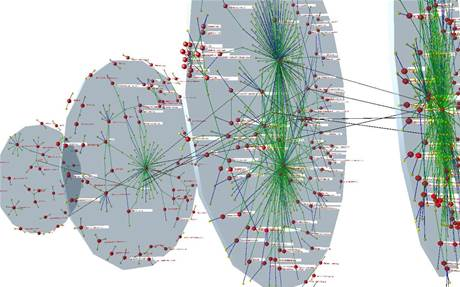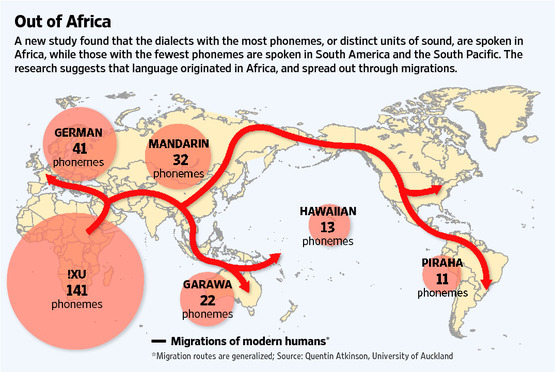Often the most important things are invisible — we simply don’t have eyes to see. Feel the wind on your cheek and something undetectable to the human eye has been perceived. But what of the cultural patterns that have been invisible to us? How can we learn to see them?
In 2016, most professional media commentators didn’t see the upwell of support for Donald Trump. They also didn’t see how deeply conflicted the U.S. citizenry was about Hillary Clinton. These patterns were there for anyone who knew how to look for them, but were beyond the scope of analysis revealed by traditional polling or the standard tools of political science. Yet they proved to be very real come election day!
Similarly, the meshwork of relationships on social media are largely invisible to us. We cannot see who is connected to whom or how information cascades across our networks as we like and share each others’ posts. Yet these patterns too are very real.
 The spread of email viruses made visible. See here for details.
The spread of email viruses made visible. See here for details.
There are social contagion effects as ideas spread with the same mathematical patterns as bacteria and viruses during a disease epidemic. This was seen with the global dispersal of “memes” during Occupy Wall Street and the Arab Spring. Or in the spread of news about the death of Osama Bin Laden.
Some researchers who study the evolution of language have even mapped out how they spread throughout history as part of the complex interplay of rising and collapsing empires, mass migrations, and pioneering exploration. These invisible fossils have been recreated by digitizing written text and mining it for patterns that would otherwise be impossible to see.
 Tracing the movement of word sounds throughout history as part of human migration.
Tracing the movement of word sounds throughout history as part of human migration.
What other patterns of culture remain invisible today? And how might we go about learning how to see them? This is a question I ask as part of the team creating the Cultural Evolution Society — which now has 2,000 members in more than 50 countries who share a diverse methodological toolkit that includes Darwinian evolution as a framework for making sense of cultural change. Our first conference is scheduled for next month at the Max Planck Institute for the Science of Human History where a gathering of researchers from anthropology, archeology, biology, psychology, primate studies, digital humanities, and more will come together and begin to map out all that is now known about cultural evolutionary studies.
 The “Grand Challenges” for Cultural Evolution from a survey of our members. See here for more.
The “Grand Challenges” for Cultural Evolution from a survey of our members. See here for more.
I am writing this article to prompt you to think about which cultural patterns YOU would like to make visible. Do you want to see the effects of runaway global warming on coastal cities? How hate groups arise during times of political struggle? Where the deep drivers of violence come from for the epidemic of mass shootings in the United States? There are so many cultural patterns that shape our lives — yet they remain invisible to us because we don’t have the eyes necessary to see them.
This is where great promise comes in the combination of a deluge of data alongside visualization tools that can be used to analyze and make their relationships understandable to the untrained eye. As the graphics throughout this article show, there is great power in visualized data and with this power comes new horizons of possibility for seeing and acting upon a rapidly changing world.
As I’ve argued elsewhere, we are living through an unprecedented time in human history. And the study of cultural evolution is more vital to our survival than most of us realize. So I invite you on this learning journey with me. Together, we can practice seeing the dynamics of culture with the tools available in 21st Century social sciences that map out networks, reconstruct historical patterns of development, and simulate interactions using computational models and visual tools.
Onward, fellow humans.





